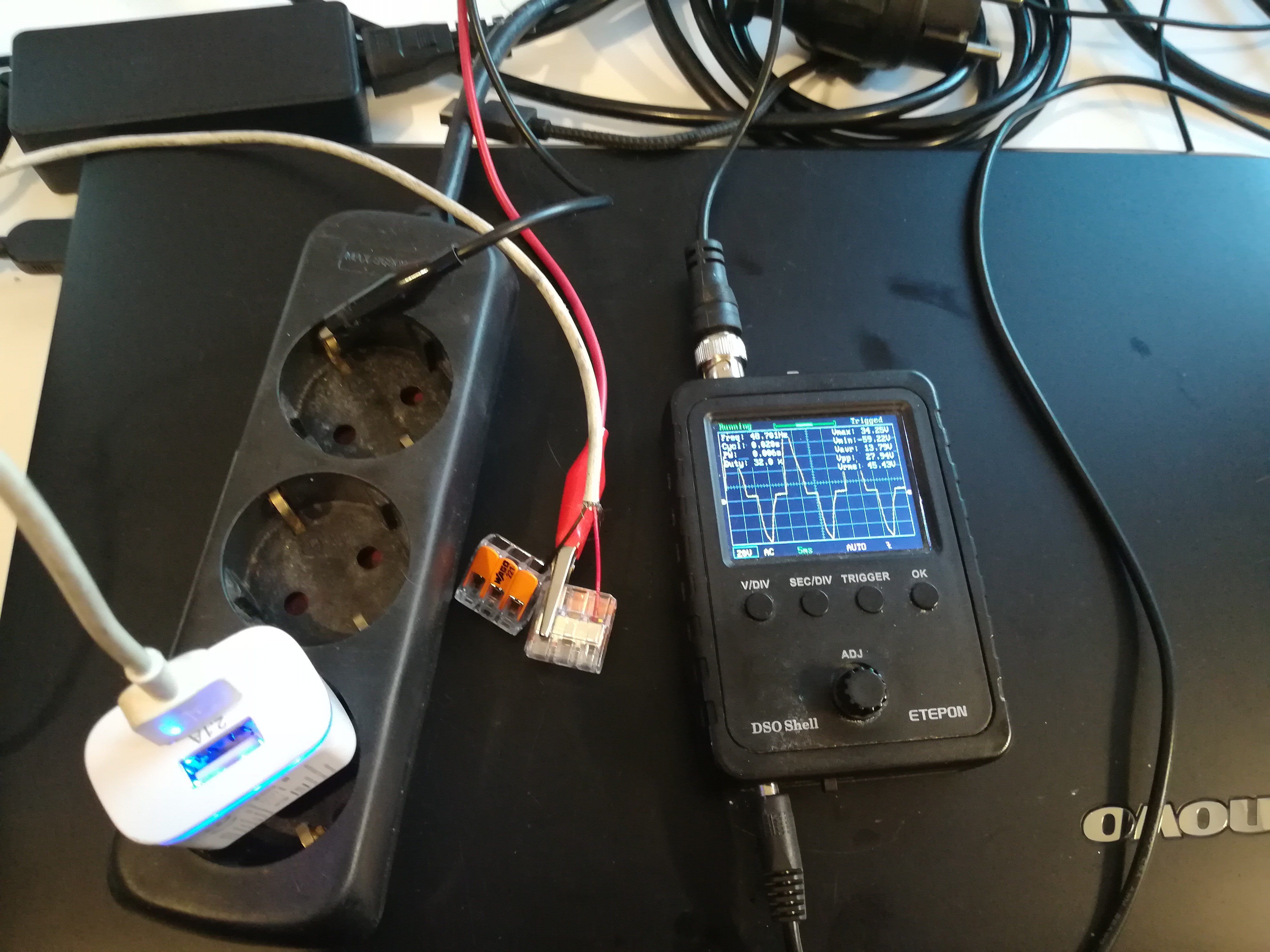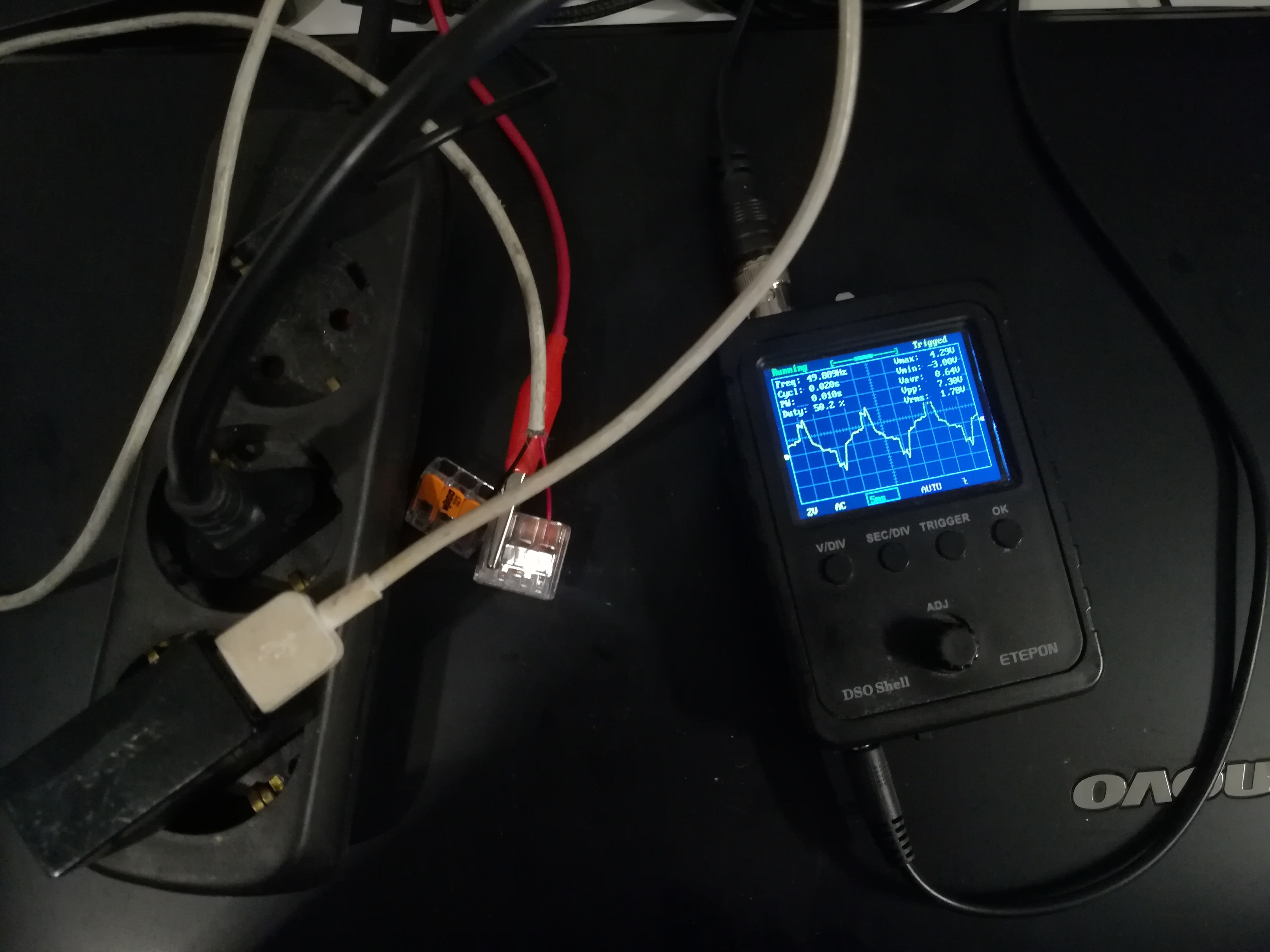I noticed something really interesting when I connected a cheap function generator to the charge electrode without connecting the ground (of the charge electrode).
By doing so I get a pretty high AC voltage reading on the charge electrode. The voltage is also not just a misreading, but actually present. I know that because it can influence the deflection of the ink stream when I turn on the high-voltage deflection plate. Turning the high voltage on while the unknown signal is present leads to an oscillating ink stream - the ink stream moves back and forth from the middle position at around 50Hz.
The function generator is powered by a common 5V USB smartphone charger.
While trying out a different USB charger the signal changed and by running the function generator from a power bank or my notebook the signal disappeared completely.
So, because of the 50Hz and because of the absence of the signal when the function generator is battery powered, I guess that the unknown signal is AC noise from mains that could somehow pass the USB charger and function generator to reach the charge electrode and also charge the ink stream.
I have to admit that I'm pretty happy about this noise because it is helpful to prove some things:
- It shows that the charging and deflection work in general with my current setup.
- It is reproducible. I had unwanted deflection before which was unfortunately not reproducible and so I couldn't dig deeper into it.
- It shows that AC charging leads to deflection in both directions, left and right from the middle position. This means it can charge the ink stream positive and negative. Before, when the high voltage cable was too close to the not connected charging cable, deflection happened only towards the high voltage plate which I think means only negative charging of the droplets caused by a positive voltage on the charge electrode. With the AC noise, it happens in both directions, tho.
- It visually confirms that there is no high voltage to ground leak, which had been a huge problem in the past.
While I was thinking about the source of the signal I decided to do a test to find out whether it comes from the printer, the function generator, the charger, or mains.
For that, I cut off the micro USB plug of an old USB cable to access the +5V and GND USB charger connections.
I then tried to prove my assumption by connecting the +5V USB Charger connection to the oscilloscope and the GND pin of the oscilloscope to mains PE.
By doing so, I could successfully prove that the noise came from the USB charger or mains, but not from the printer or function generator.
To be safe I also tried powering the oscilloscope via battery and could still measure the signal.

While I still don't know how exactly the signal gets generated - what I guess also doesn't really matter for the project - I think it's a pretty nice coincidence that I didn't connect the function generator's ground to the printer's ground and so could find this noise signal that was very useful for testing.
I just saw that I had even more luck because the other USB charger that I used for comparison creates much less noise and so it likely would have not caused any visible deflection of the ink stream so that the noise would have been overlooked.

I did the measurement without connecting the GND of the USB charger to anything and left it floating.
When I then connected the charger's GND to PE, the noise disappeared - it also worked when I swapped the charger's output lines.
My uneducated guess would be, that the noise is created by the switching of the USB charger which couples into the charger's output lines as well as in the mains' live and neutral. Because at some point in the building's electrical system, the neutral line is connected to earth the noise is also present on the PE line.
When now the charger's output, which is not connected to the oscilloscope, gets connected to PE where the oscilloscope's ground pin is also connected to, the oscilloscope receives the 5V DC from the charger's output which can provide much more current than the noise signal. With that the noise is no longer detectable.
While using the function generator and connecting the printhead's ground to it's output the noise was likely shorted so that it did no longer traveled across PE, but through the prindhead's ground to function generator's ground connection instead.
I also could be totally wrong with that...
Anyways... next up is creating a signal that can charge the ink stream as the noise does.
 Dominik Meffert
Dominik Meffert
Discussions
Become a Hackaday.io Member
Create an account to leave a comment. Already have an account? Log In.